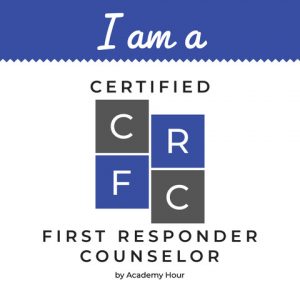⚠ A Note Before We Begin:
I want to be very clear—I do not intend to diminish the experience of individuals who have lived through chronic and severe trauma. C-PTSD is a serious and deeply complex condition that requires professional care, understanding, and support. This comparison is not meant to equate workplace stress with trauma, but rather to highlight the severe impact of chronic stress on the nervous system. My hope is that by drawing these parallels, someone in a high-stress profession will recognize the urgency of prioritizing their well-being before burnout takes a heavier toll.
In the fast-paced world we live in, resilience is often framed as something grand—overcoming massive obstacles, pushing through burnout, or making major life changes. But what if resilience wasn’t about dramatic transformations? What if it was about something much smaller—something as simple as a favorite song, a deep breath of fresh air, or a warm cup of coffee?
For those living with Complex Post-Traumatic Stress Disorder (C-PTSD) and those in high-stress professions, resilience can feel like an uphill battle. But emerging research in positive psychology and neuroscience shows that cultivating “micro-joys” can help strengthen the nervous system, reduce stress, and build a foundation for long-term well-being.
The Link Between C-PTSD and High-Stress Professions
C-PTSD develops after prolonged exposure to traumatic events, leading to symptoms such as emotional dysregulation, hypervigilance, and difficulty trusting others. While this condition is distinct from job-related stress, there are striking parallels between individuals with C-PTSD and those working in high-pressure environments—such as healthcare workers, first responders, therapists, and educators.
Professionals in these fields often experience:
✔ Chronic exposure to distressing situations
✔ Emotional exhaustion and compassion fatigue
✔ Disrupted nervous system responses (fight, flight, freeze, or fawn)
✔ Hypervigilance and difficulty “turning off” work stress
According to a 2021 study in the Journal of Occupational Health Psychology, prolonged exposure to workplace stressors can lead to emotional numbing, anxiety, and cognitive distortions, similar to the effects of trauma (source). Additionally, a 2023 study published in Frontiers in Psychology found that individuals in high-stress jobs show higher levels of cortisol dysregulation, which is also common in individuals with PTSD (source).
While C-PTSD is a clinical diagnosis requiring specialized treatment, the nervous system responses to chronic stress and trauma are similar. This means that proactive self-care is not just “nice to have” for high-stress professionals—it’s essential for long-term well-being.
Why Micro-Joys Matter for Healing and Resilience
Micro-joys are small, positive moments that create a brief, but meaningful, emotional uplift. These moments act as counterbalances to stress, helping regulate the nervous system and restore emotional balance.
Micro-joys are powerful because they:
✔ Activate the parasympathetic nervous system (reducing fight-or-flight responses)
✔ Increase dopamine and serotonin levels (improving mood and cognitive flexibility)
✔ Interrupt stress cycles (preventing chronic burnout and emotional depletion)
✔ Build emotional resilience (creating a buffer against workplace stress or trauma responses)
In short, micro-joys train the brain to notice positive moments, which counteracts the brain’s natural negativity bias—a function that is heightened in both trauma survivors and those in high-stress professions.
Simple Micro-Joys That Support Resilience
You don’t have to overhaul your life to benefit from micro-joys. Small, intentional moments can create profound shifts over time. Here are a few evidence-backed micro-joy strategies:
1. Sensory Grounding Moments
For those experiencing hypervigilance, emotional exhaustion, or chronic stress, sensory grounding helps bring the nervous system back to the present.
🔹 Run warm or cool water over your hands and focus on the sensation.
🔹 Breathe in the smell of coffee, essential oils, or fresh air.
🔹 Listen to music that makes you feel safe or uplifted.
🔹 Hold something with texture (a soft blanket, a smooth stone, etc.).
These moments signal safety to the nervous system, helping reduce stress hormones.
2. Nature-Based Micro-Joys
Studies show that even two minutes in nature can lower cortisol levels. If you work in a high-stress profession, prioritize these small moments:
🌱 Step outside for one minute of fresh air between tasks.
🌱 Walk barefoot in grass or sand to engage grounding techniques.
🌱 Watch the sunrise or sunset—simple, yet deeply soothing.
Nature has a regulating effect on the nervous system, making it an easy micro-joy tool.
3. Daily Appreciation Rituals
People with C-PTSD and those in high-stress jobs often experience cognitive distortions that focus on what’s wrong (and understandably so!). That said, shifting attention to small, positive moments helps rewire the brain toward healing.
💡 Write down one good thing about your day, no matter how small.
💡 Take three deep breaths when you wake up, setting a calm tone.
💡 Say thank you to someone (even silently to yourself) for something small.
Gratitude is one of the most research-backed happiness tools, and micro-gratitude practices have been shown to increase long-term resilience.
4. The Power of Play & Humor
Laughter and play are biological reset buttons for the nervous system. Yet, adults in high-stress jobs and trauma survivors often lose touch with playfulness.
🎭 Watch a funny video or read a lighthearted book.
🎭 Do something playful—a silly dance, doodling, or word games.
🎭 Find someone who makes you laugh, and connect with them.
Research shows that laughter decreases stress hormones like cortisol and increases dopamine, helping counteract burnout and emotional depletion.
Final Thoughts: Small Steps Matter
For people with C-PTSD, healing can feel overwhelming. For those in high-stress jobs, burnout can feel inevitable. But micro-joys offer a way forward—not by ignoring challenges, but by intentionally adding small moments of light into the day.
If you work in a high-stress job, I challenge you to commit to one micro-joy today. It won’t eliminate stress overnight, but over time, these small moments will help build resilience, restore balance, and support long-term well-being.




